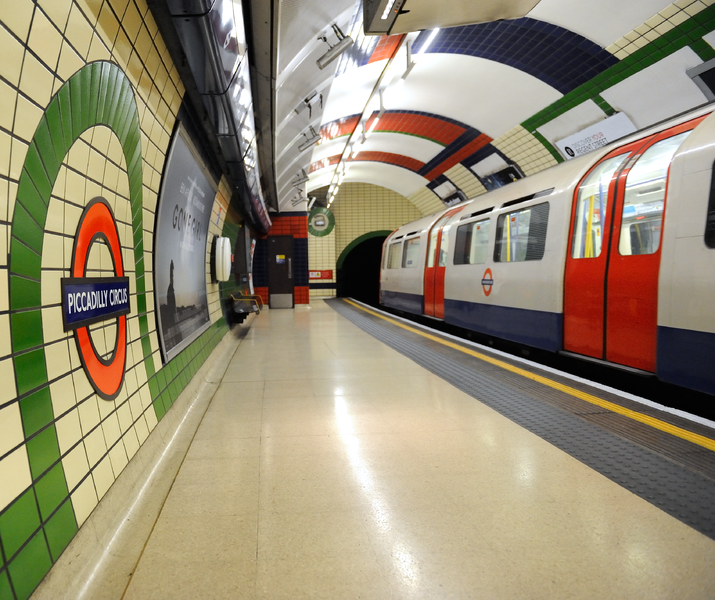London is the capital of the United Kingdom and one of the world’s oldest and largest cities. It is Great Britain’s economic , cultural and political centre. Its sights attract millions of tourists every year.
Geography
London lies on the River Thames , about 50 km from the North Sea . The river has influenced London for many centuries . Rising tides have flooded the city more than once. In the 1970s and 80s a large barrier was built in the eastern part of the city to stop incoming water from flooding the nation’s capital.
London is divided into three main sections .
- The City is London’s financial district and the oldest part of the capital . It is very small, with a size of only one square mile. Although only a few thousand people live here, hundreds of thousands pour into the City every day to work in the big office buildings of large banks and other institutions.
- The West End includes London’s government district Westminster as well as the famous shopping streets around Piccadilly Circus and Trafalgar Square. The city’s famous cinemas, theatres and bars are located in the West End. Most of London’s tourist attractions are concentrated here.
- The South Bank is the area south of the Thames River. It is a cultural district with many concert halls, museums, theatres and galleries.
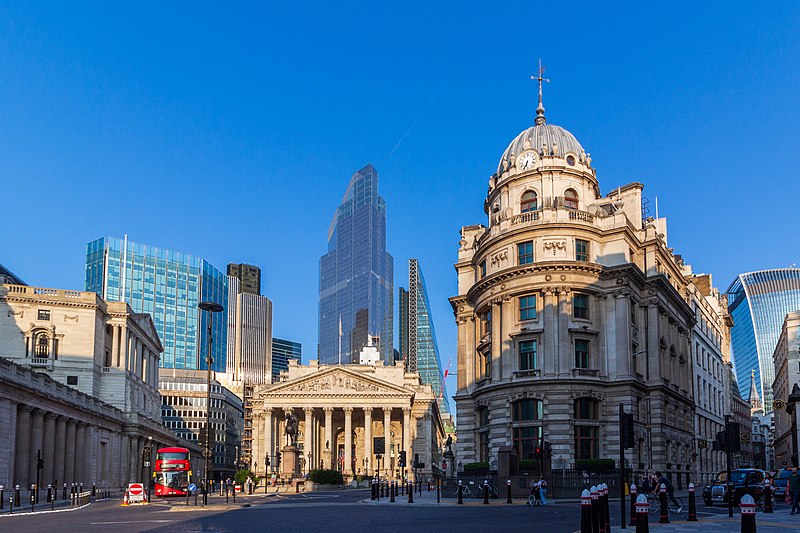
City of London with the Bank of England in the background
Image: The wub, CC BY-SA 4.0,
via Wikimedia Commons
History of London
London has a 2000 year old history. In the first century A.D. the Romans came to Great Britain and founded a settlement near the mouth of the River Thames . They called it Londinium.
After they left London about four hundred years later the Saxons, a Germanic tribe , settled in the area. In the centuries that followed Vikings repeatedly attacked the city .
When William the Conqueror invaded Britain in 1066 London was already the biggest town on the island. William made the city its capital and crowned himself king in Westminster Abbey on Christmas Day. He also built the Tower of London to protect the city from invaders .
During the Middle Ages London grew steadily. It became one of Europe’s trading centres and its population grew to about 200,000 by the beginning of the 17th century . Then disaster struck the city twice. The Great Plague of 1665 killed about a fourth of the city’s population. A year later the Great Fire burned down most of the older part of the city. After this tragedy the city was rebuilt with houses made of stone and brick instead of wood.
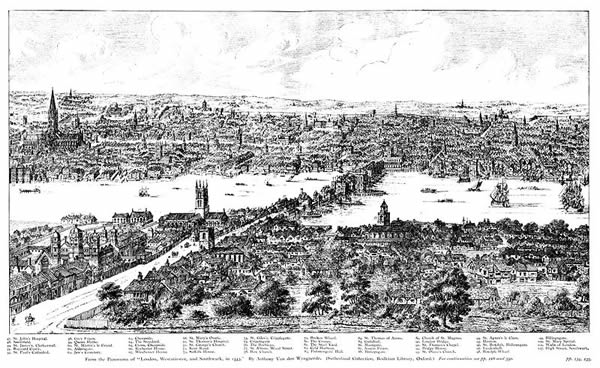
London in the 16th century
Image: Nathaniel Whittock, Public domain,
via Wikimedia Commons
At the beginning of the Industrial Revolution almost a million people lived in London. It was the largest city in the world and the centre of the British Empire, which, at that time, was growing at a rapid pace .
As more and more people moved to the city from the countryside London needed more and better transportation systems. In 1863 it became the first city in the world to start an underground railway system .
During the Second World War, Nazi Germany bombed London heavily . 30,000 people were killed. The rebuilding of the city after World War II caused many problems. City planners did not want London to grow endlessly in all directions. A green belt was created around the city to stop its expansion . Outside of this green area new towns emerged. They became small cities which many people moved to later on.

London during the bombings of World War II
Image: New York Times Paris Bureau Collection, Public domain,
via Wikimedia Commons
In the second half of the 20th century London faced many problems that other megacities also have: air pollution, traffic jams and unemployment.
In the 1970s and 80s the Docklands in the eastern part of London were rebuilt. They were once part of the world’s largest harbour . The Docklands lost their importance as the British Empire lost its colonies. In the past decades new office buildings , shopping centers and a new airport have been created in an attempt to revitalize this region.
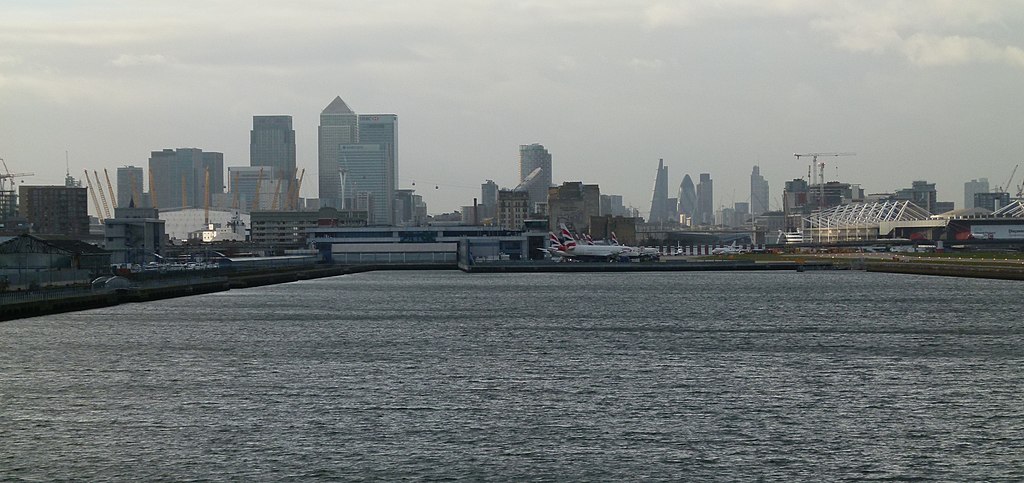
The London Docklands
Image: Kleon3, CC BY-SA 4.0,
via Wikimedia Commons
Population
London became one of the first megacities in the world. Since the end of World War II , however , the population of the city has begun to decrease because many people have been moving to the suburbs and new towns outside of London.
London is a multicultural city. In the 19th century thousands of people began pouring into London as a result of the Industrial Revolution. At the beginning of the 20th century immigrants from other European countries came.
In the 1950s and 60s people from Britain’s colonies came to London. Indians , Pakistanis and West Indians are a common sight in the city today. About 25 % of London’s population are immigrants or the children of immigrants.

Crowd at the Notting Hill Carnival in 2006
Photo by DAVID ILIFF. License: CC BY-SA 3.0
Economy and Tourism
London is the UK’s main economic and financial centre. It is the centre of trade and banking.
Factories around the city produce all kinds of consumer goods – from clothes and electronic products to food and chemicals.
Trading companies were founded along the Thames river at a time when Great Britain was still the biggest colonial power in the world. Docks and wharfs in eastern London became the centre of world trade. New container terminals were built in the 60s, in order to handle the larger cargo ships that come to London.
London is Europe’s most important banking and financial centre. Almost all of the world’s large banks have regional headquarters in London. The Bank of England, located in the City of London, controls the country’s money supply and is responsible for the value of the British pound sterling.
Tourism is an important economic factor for the city. Every year millions of people from all over the world come to London to see the city’s well-known sights. Pupils and students from all over the world come here to learn English or to take language courses. Over 200 000 Londoners work in tourist-related industries.
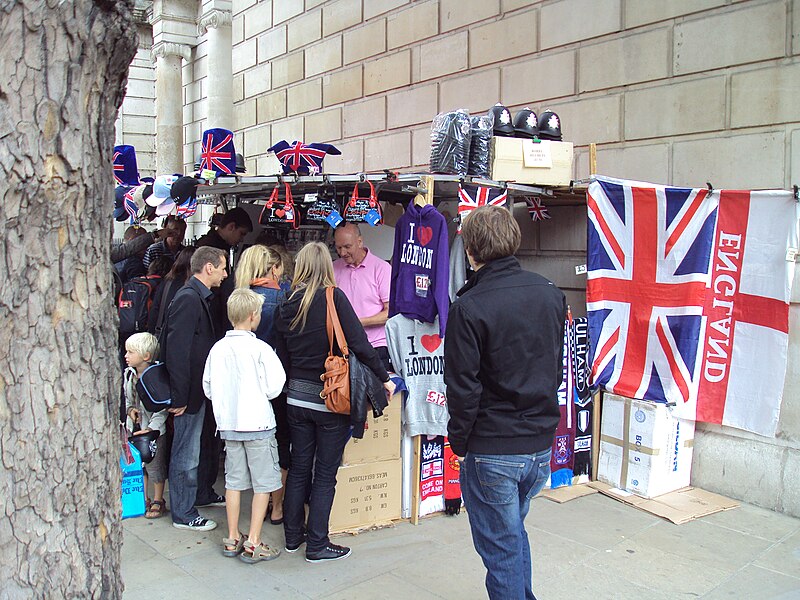
Tourist stall selling souvenirs in London
Image: Rept0n1x, CC BY-SA 3.0,
via Wikimedia Commons
Transportation
As Europe’s gateway overseas London has two big international airports. Heathrow, in the western part of the city, is the main airport for international flights. Gatwick, halfway between London and the southern coast was opened in 1958 in an attempt to get some of Heathrow’s traffic away from the city. Stansted, in the north of London, handles regional flights and flights of budget airlines . London’s new City Airport is only 15 minutes from the city centre and is used especially by business travelers.
There is probably no other city in the world that has such a dense public transport system than London. The Tube, London’s underground railway, is the oldest in the world. The red double-decker buses are well-known around the globe and a symbol of inner city transportation. All together, about 5 million people use London’s public transport every day.
London has 6 railway stations that handle over 1.5 million commuters who travel in and out of the city every day. Fast trains from Paris and Brussels arrive in London daily through the Channel Tunnel.
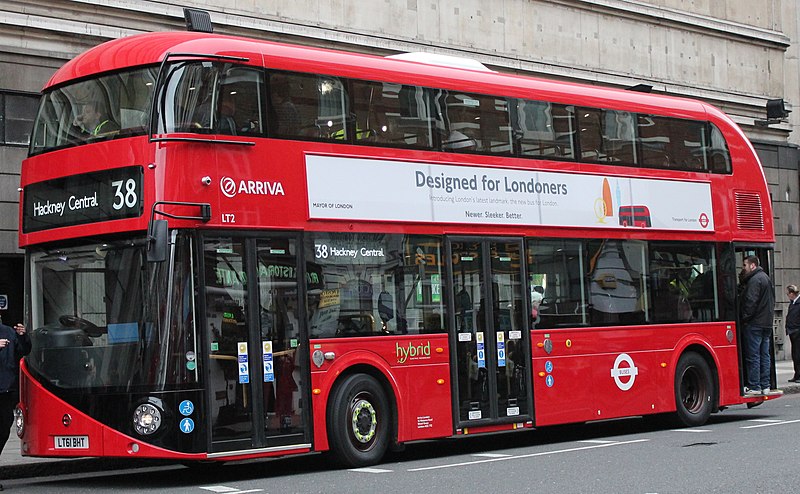
London’s famous double decker buses
Image: Badudoy (original), cropped by User:Ultra7, CC BY-SA 3.0,
via Wikimedia Commons
Culture
London is well-known for its museums, art galleries and concert halls.
The British Museum is one of the oldest and largest museums in the world. It contains over seven million artifacts from all continents, cultures and civilizations.
The National Gallery, situated near Trafalgar Square, is home to a great selection of European paintings. Tate Gallery has works of British and modern art.
London’s theatres perform works of Shakespeare and other great dramatists. The Royal Opera House at Covent Garden is host to performances of London’s big orchestras
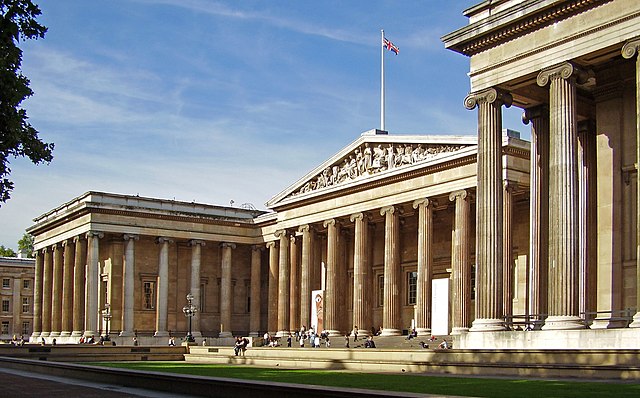
Image: Ham, CC BY-SA 3.0,
via Wikimedia Commons
Sights and Places to See

Buckingham Palace
Image: Diliff, CC BY-SA 3.0,
via Wikimedia Commons
Buckingham Palace is the most famous of London’s many royal palaces. Constructed in the 18th century , it is located at the end of the Mall, one of London’s broadest roads. The Queen and her family live in a part of the palace. Other parts can be visited by tourists. The Changing of the Guard is a ceremony that takes place every day.

Tower of London
Image: © Hilarmont (Kempten), CC BY-SA 3.0 DE,
via Wikimedia Commons
The Tower of London is one of the oldest buildings in the city. The fortress consists of several buildings around a central tower . It is situated on the northern bank of the River Thames . For many centuries the Tower of London served as a prison . Among the most famous prisoners were the explorer Sir Walter Raleigh and Anne Boleyn, one of Henry VIII’s wives who was beheaded there. Today visitors are able to see the Crown Jewels of England which were originally protected by Beefeaters and the Tower’s ravens .
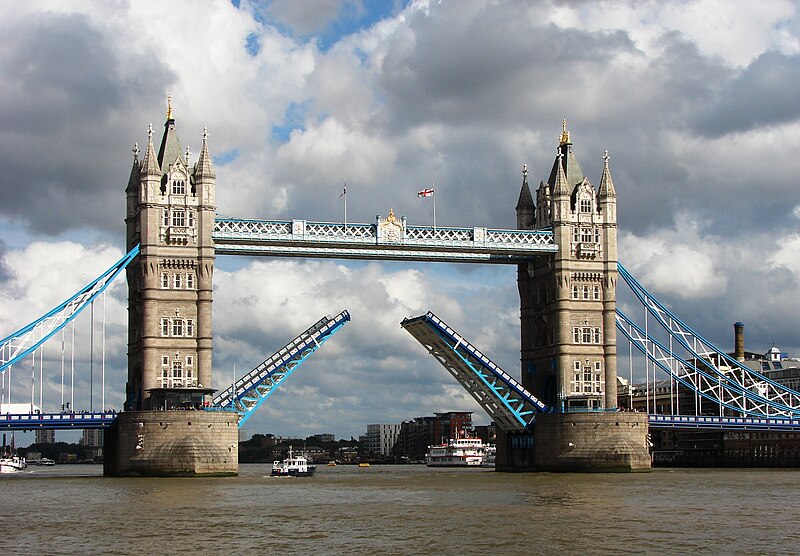
Tower Bridge
Image: Mvkulkarni23, CC BY-SA 3.0,
via Wikimedia Commons
The Tower Bridge , near the Tower of London, may be London’s most impressive landmark . The bridge is over a hundred years old and can be raised to let ships pass through. The two towers and the walkway that connects them give visitors a great view of London.

St. Paul’s Cathedral
Image: Mark Fosh, CC BY 2.0,
via Wikimedia Commons
St. Paul’s Cathedral was rebuilt in the 17th century by the great English architect Sir Christopher Wren after the original building had been destroyed by the Great Fire of London in 1666. It has the largest dome in the world after St. Peter’s Basilica in Rome.

Westminster Abbey
Image: Σπάρτακος (changes by Rabanus Flavus), CC BY-SA 4.0,
via Wikimedia Commons
Westminster Abbey is located near the Houses of Parliament. Since its construction by William the Conqueror in 1066 almost all of the country’s kings and queens have been crowned there. Monarchs and famous people are buried in the abbey . Among them are Charles Darwin and Sir Isaac Newton.
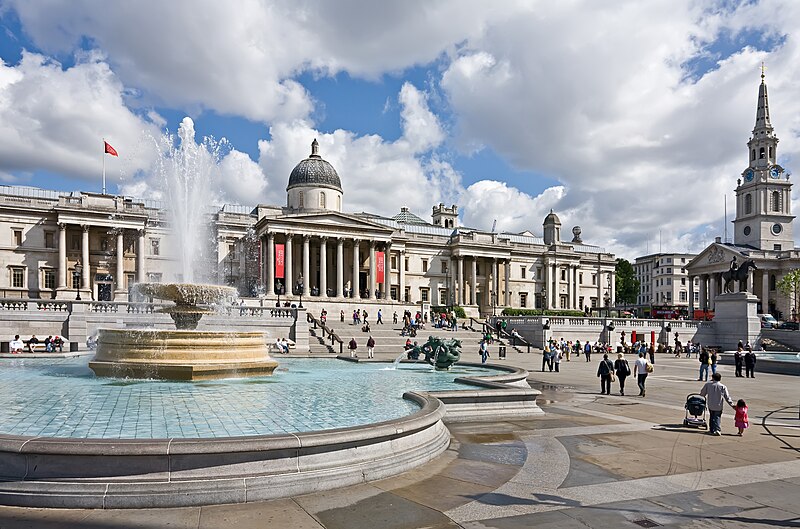
Trafalgar Square
Image: Diliff, CC BY-SA 3.0,
via Wikimedia Commons,
The largest square in London has been a central meeting place since the Middle Ages. In the centre is Nelson’s Column, built in honour of Admiral Nelson, who defeated the French fleet at Trafalgar in 1805.
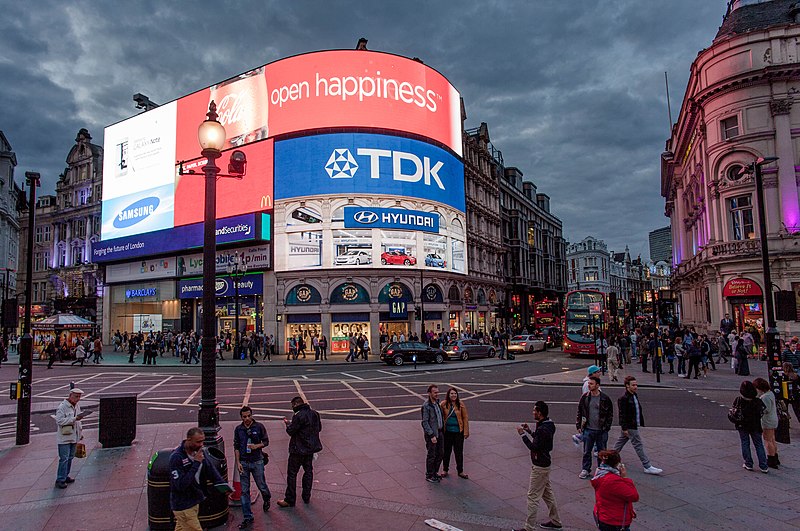
Picadilly Circus
Image: Jimmy Baikovicius, CC BY-SA 2.0,
via Wikimedia Commons,
A busy plaza in the heart of London lies at the junction of five major streets. The place is famous for its colourful billboards , a fountain and a statue of Eros.

Houses of Parliament
Image: Terry Ott from Washington, DC Metro Area, United States of America, CC BY 2.0,
via Wikimedia Commons
The Houses of Parliament are located in the city of Westminster alongside the River Thames . Both the House of Commons and the House of Lords hold their meetings in the palace. Big Ben , the clock tower’s famous bell , has been chiming since the middle of the 19th century .

The Serpentine in Hyde Park
Image: The original uploader was Jamie101 at English Wikipedia., CC BY-SA 2.5,
via Wikimedia Commons
The city of London is well known for its large and beautiful parks. Hyde Park is the largest of London’s royal parks. It is about 2 km long and over 1 km wide. Hyde Park is a popular area for free time activities, including jogging, running and horse riding. Speaker’s Corner, near the north-eastern entrance of Hyde Park is a place where Londoners gather and listen to people who talk about all kinds of things. The Serpentine is a large artificial lake where people can go swimming or rowing . London has many other parks, including St. James’s Park, with a great view of Buckingham Palace, and Green Park.

Greenwich and the National Maritime Museum
Image: Gryffindor, CC BY-SA 3.0,
via Wikimedia Commons
Greenwich is a famous district in the eastern part of London. Tourists either take a Thames boat ride there or go by the Dockland’s Light Railway. Greenwich is famous for British naval history. The National Maritime Museum shows exhibits from a time when Britain was the world’s biggest sea power.
The Royal Observatory has a planetarium and a museum with a display of astronomical and navigational instruments. The prime meridian of the world goes through the observatory. It divides the world into an eastern and western hemisphere .
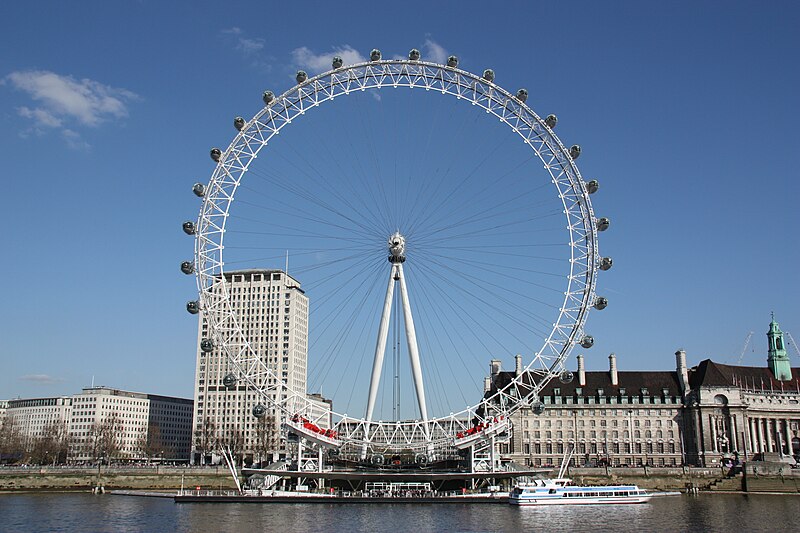
London Eye
Image: Khamtran, CC BY-SA 3.0,
via Wikimedia Commons
A giant Ferris wheel rises 135 m high on the south bank of the River Thames. It was built as a part of London’s millennium celebrations . Each egg-shaped cabin can take up to 25 passengers. A complete turn of the wheel takes 30 minutes.
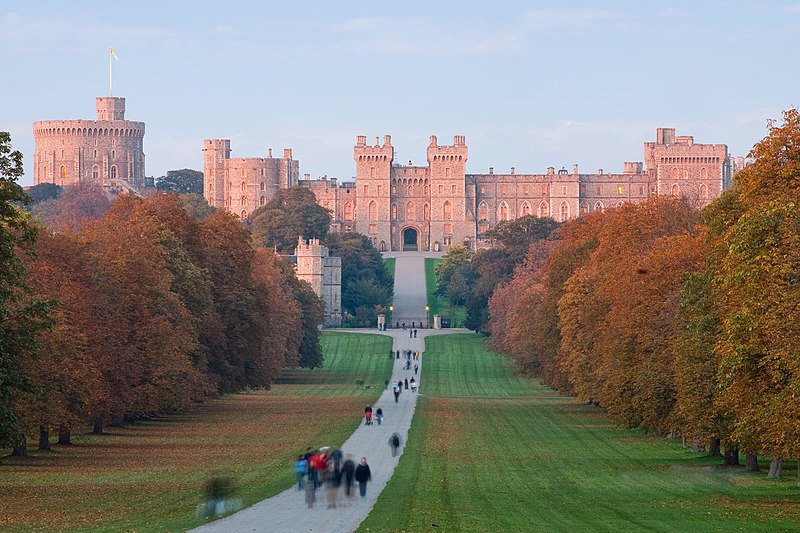
Windsor Castle
Image: Diliff, CC BY-SA 3.0,
via Wikimedia Commons
One of the royal family’s official residences is the largest inhabited castle in the world. It lies about 30 km west of London. In the course of history it has been changed several times.
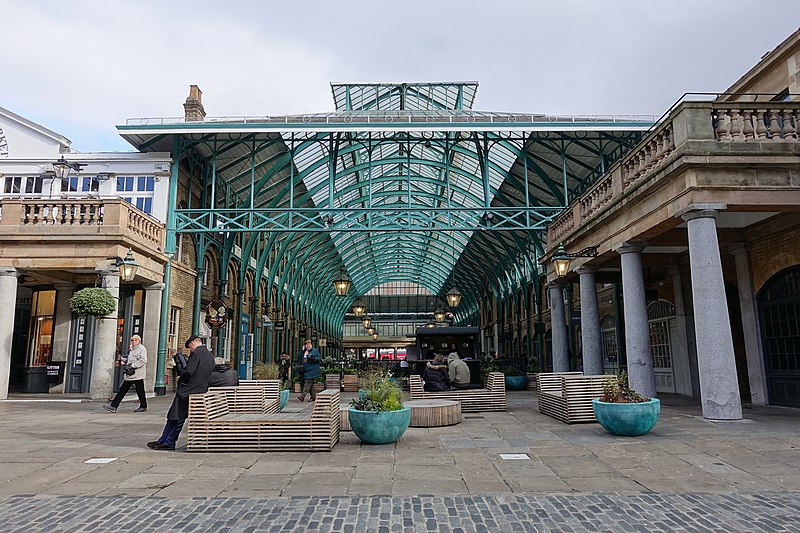
Covent Garden
Image: CrisNYCa, CC BY-SA 4.0,
via Wikimedia Commons
The former fruit and vegetable market is always a crowded place , especially during weekends and in the summertime. Today it is known for its open-air cafes, restaurants, pubs and street performers .

Madame Tussauds Wax Museum
Image: I, Citizen59, CC BY-SA 3.0,
via Wikimedia Commons,
The most famous museum of wax figures was opened in 1835. Thousands of famous people, artists, writers, politicians and other celebrities have been created in wax. During the tourist season waiting lines can be very long. The museum now has other wax museums in cities all over the world.

The new Globe Theatre
Image: Diego Delso, CC BY-SA 4.0,
via Wikimedia Commons
The Globe was originally built in 1599 by William Shakespeare’s company of actors. It was destroyed and rebuilt in the early 17th century. Shakespeare’s Globe, a reconstruction of the old Globe was finished in 1997.
